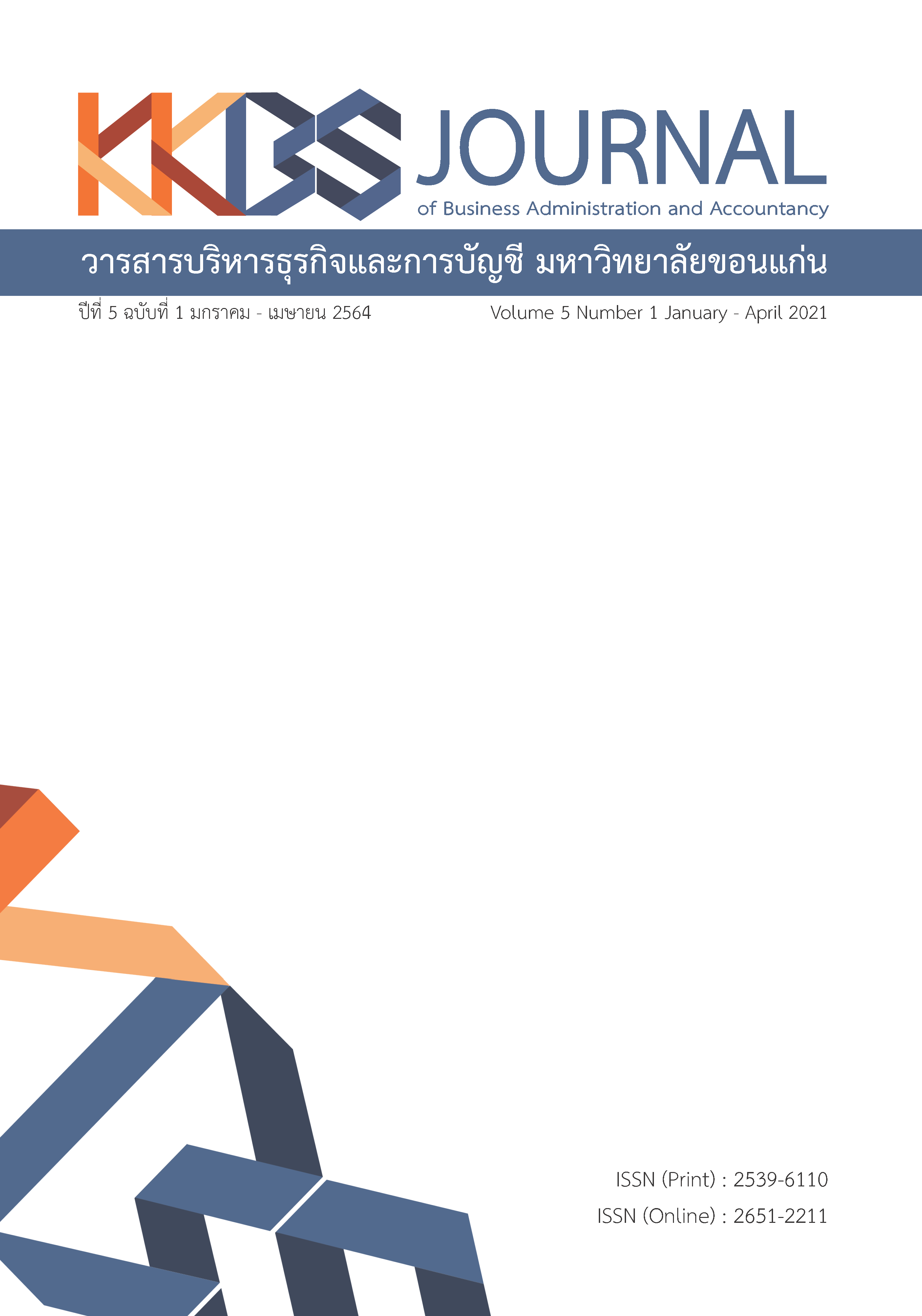ความสัมพันธ์เชิงสาเหตุของสภาวะการหมดไฟและปัจจัยภายในที่ส่งผลต่อประสิทธิภาพในการปฏิบัติงานของบุคลากรมหาวิทยาลัยบูรพา
Main Article Content
บทคัดย่อ
การวิจัยนี้มีวัตถุประสงค์เพื่อพัฒนาและตรวจสอบความสอดคล้องของโมเดลความสัมพันธ์เชิงสาเหตุระหว่างสภาวะหมดไฟและปัจจัยภายในที่ส่งผลต่อประสิทธิภาพในการปฏิบัติงานของบุคลากรมหาวิทยาลัยบูรพากลุ่มตัวอย่างจำนวน300คนที่เป็นพนักงานมหาวิทยาลัยตำแหน่งพนักงานสายสนับสนุนวิชาการในมหาวิทยาลัยได้มาจากการใช้วิธีการสุ่มกลุ่มตัวอย่างแบบเป็นสัดส่วนเครื่องมือที่ใช้เป็นแบบสอบถามวิเคราะห์ข้อมูลด้วยการวิเคราะห์เส้นทาง
ผลการวิจัยพบว่าปัจจัยที่มีอิทธิพลต่อสภาวะการหมดไฟในการทำงานมากที่สุดคือการหล่อหลอมให้มีเป้าหมายแบบมุ่งที่งานซึ่งส่งผลทางลบรองลงมาคือการหล่อหลอมให้มีเป้าหมายแบบมุ่งที่ตนเองและการปฏิบัติงานหนักเกินไป ส่วนความวิตกกังวลอันเป็นลักษณะนิสัยและความขัดแย้งของบทบาทหน้าที่เป็นอันดับสุดท้ายซึ่งตัวแปรสภาวะการหมดไฟในการทำงานจะส่งผลทางลบกับตัวแปรตัวแปรประสิทธิภาพในการทำงานของบุคลากรมหาวิทยาลัยโดยโมเดลที่พัฒนาขึ้นมีความสอดคล้องกับข้อมูลเชิงประจักษ์ซึ่งพิจารณาจากค่า χ2 เท่ากับ 14.46 ค่า df เท่ากับ 9 ค่า P-Value เท่ากับ .11 ค่า CFI เท่ากับ.99 ค่า GFI เท่ากับ .99 ค่า SRMR เท่ากับ .05 ค่า RMSEA เท่ากับ .02
Article Details
บทความที่ได้รับการตีพิมพ์ในวารสารเป็นความคิดเห็นของผู้เขียน มิใช่ความคิดเห็นของกองบรรณาธิการและคณะผู้จัดทำวารสาร และบทความที่ได้รับการตีพิมพ์เป็นลิขสิทธิ์ของวารสารบริหารธุรกิจและการบัญชี มหาวิทยาลัยขอนแก่น
เอกสารอ้างอิง
Best, J. W. & Kahn, J.V. (2006). Research in education. 10th. New Delhi: PHI Learning. Department of Industrial Promotion. (2020). Attitude is everything life. Retrieved May 1, 2020, from: https://www.dip.go.th/th/category/knowledge/2020-06-28-15-58-16 (In Thai)
Division of Human Resources Administration and Development. (2019). Burapha University employee data statistics. Retrieved May 1, 2020, from: http://personnel.buu.ac.th/document/Person3166.pdf (In Thai)
Dubois, B. et al. (2014). Advancing research diagnostic criteria for Alzheimer's disease: the IWG-2 criteria. The Lancet Neurology, 13(6), 614-629.
Hair, J.F. et al. (2014). Multivariate data analysis. 7th ed. Harlow: Pearson.
Herbert, J. (1970). Direct observation as a research technique. Psychology in the School, 7(2), 137-138.
Hoboubi, N. et al. (2017). The impact of job stress and job satisfaction on workforce productivity in an Iranian petrochemical industry. Safety and health at work, 8(1), 67-71.
Katavanit, T. (2003). General psychology. Bangkok: Se-ed. (In Thai)
LaRosa, J.C. et al. (1970). A specific apoprotein activator for lipoprotein lipase. Biochemical and biophysical research communications, 41(1), 57-62.
Limpitikranon, P. (2020). OKR guide. Retrieved May 1, 2020, from: https://www.okr-thai.com/okr-guide/ (In Thai)
Maslach, C. & Leiter, M.P. (2016). Understanding the burnout experience: recent research and its implications for psychiatry. World Psychiatry, 15(2), 103-111.
Moorhead, G. & Griffin, R.W. (2001). Organizational behavior: Managing people and organizations. 6th ed. Mason: Houghton Mifflin College.
Patcharanan, K. (2007). The reason why the team must fail. For Quality, 13(112), 88-92. (In Thai)
Psychiatric Association of Thailand. (2019). Burnout. Retrieved December 9, 2019, from: https://www.ThaiPsychiatricAssociation/ (In Thai)
Raedeke, T.D. & Smith, A.L. (2004). Coping resources and athlete burnout: An examination of stress mediated and moderation hypotheses. Journal of sport and exercise psychology, 26(4), 525-541.
Ratchagit, T. (2020). Work life balance. Retrieved May 1, 2020. from: https://th.hrnote.asia/personnel-management/190725-work-life-balance (In Thai)
Schaufeli, W.B., Leiter, M.P. & Maslach, C. (2009). Burnout: 35 years of research and practice. Career development international, 14(3), 204-220.
Smith, J.T. (1986). The mode of action of 4-quinolones and possible mechanisms of resistance. Journal of Antimicrobial Chemotherapy, 18, 21-29.
Soonsawat, A. (2020). Burnout syndrome. Retrieved December 9, 2019, from: https://www.bangkokhospital.com/content/burnout-syndrome (In Thai)
Wichetwichai, Y. (2018). Butnout syndrome. Bangkok: Samitivej Hospital. (In Thai)


